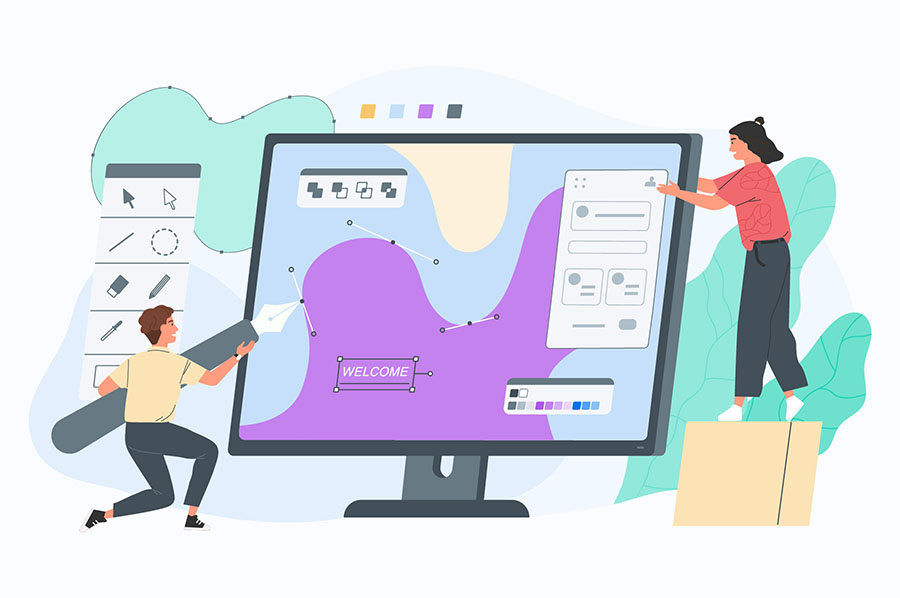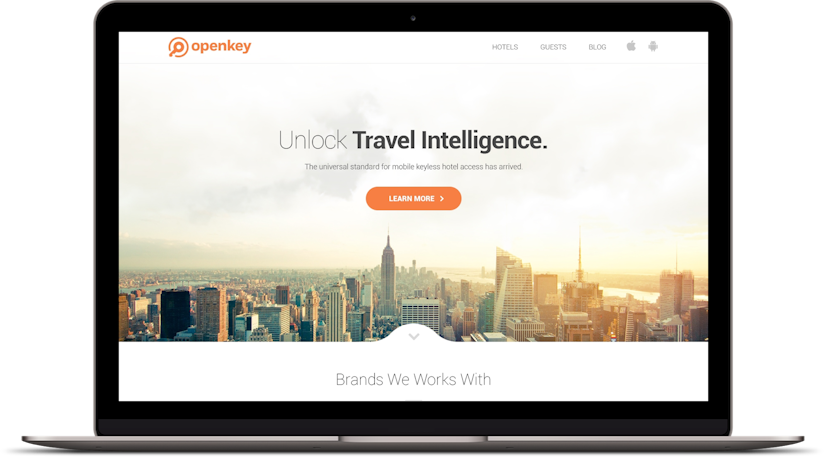All Categories
Featured
Table of Contents
- – St Louis Seo Company - St Louis Web Design And...
- – Web Design Courses & Tutorials - Codecademy T...
- – Custom Website Design And Marketing - Inmotio...
- – Design Principles - U.s. Web Design System (U...
- – Web Designer: Learn The 9 Skills You Need In ...
- – Web Design Inspiration : The Best Website Des...
- – Web Design And Applications - W3c Tips and T...
- – Html Responsive Web Design - W3schools Tips ...
- – Web Design Ledger: Homepage Tips and Tricks:
- – Web Design Studio & Digital Marketing Agency...
- – Web Design Software By Xara Tips and Tricks:
St Louis Seo Company - St Louis Web Design And Internet ... Tips and Tricks:
Quick summary Use and the energy, not the visual design, identify the success or failure of a website. Considering that the visitor of the page is the only person who clicks the mouse and therefore chooses whatever, user-centric style has actually established as a standard approach for successful and profit-oriented website design - web design frederick md.
and the utility, not the visual design, figure out the success or failure of a website. Considering that the visitor of the page is the only person who clicks the mouse and for that reason chooses everything, user-centric style has ended up being a standard approach for successful and profit-oriented website design. After all, if users can't utilize a feature, it may as well not exist.
g. where the search box need to be put) as it has already been done in a number of posts; rather we concentrate on the methods which, used effectively, can result in more advanced style choices and streamline the procedure of viewing presented information. Please see that you may be thinking about the usability-related posts we have actually published prior to: Concepts Of Great Site Design And Effective Web Style Standards, In order to utilize the concepts appropriately we initially require to comprehend how users engage with websites, how they believe and what are the standard patterns of users' behavior.
Web Design Courses & Tutorials - Codecademy Tips and Tricks:
Visitors glance at each brand-new page, scan a few of the text, and click on the very first link that captures their interest or vaguely looks like the thing they're searching for. There are large parts of the page they don't even look at. Many users search for something interesting (or beneficial) and clickable; as soon as some promising candidates are found, users click.
If a page provides users with top quality content, they want to jeopardize the content with advertisements and the design of the site. This is the reason not-that-well-designed sites with premium material gain a great deal of traffic over years. Content is more crucial than the design which supports it.

Users don't read, they scan. Notice how "hot" locations abrupt in the middle of sentences. This is typical for the scanning procedure. Really easy concept: If a site isn't able to satisfy users' expectations, then designer failed to get his task done effectively and the company loses money. The greater is the cognitive load and the less instinctive is the navigation, the more ready are users to leave the website and search for options.
Custom Website Design And Marketing - Inmotion Hosting Tips and Tricks:
Neither do they scan web page in a direct fashion, going sequentially from one site section to another one. Rather users satisfice; they pick the first affordable choice. As quickly as they discover a link that appears like it may result in the goal, there is an excellent possibility that it will be right away clicked.
It does not matter to us if we comprehend how things work, as long as we can use them. If your audience is going to imitate you're designing signboard, then design fantastic signboards." Users wish to be able to control their internet browser and rely on the consistent information discussion throughout the website.
If the navigation and site architecture aren't intuitive, the variety of question marks grows and makes it harder for users to understand how the system works and how to get from point A to point B. A clear structure, moderate visual clues and easily identifiable links can help users to discover their course to their objective.
Design Principles - U.s. Web Design System (Uswds) Tips and Tricks:

Since users tend to check out sites according to the "F"-pattern, these 3 declarations would be the first aspects users will see on the page once it is loaded. The design itself is simple and intuitive, to understand what the page is about the user requires to search for the response.
As soon as you have actually accomplished this, you can communicate why the system is beneficial and how users can benefit from it. Don't Squander Users' Persistence, In every project when you are going to provide your visitors some service or tool, try to keep your user requirements very little.
Novice visitors want to, not filling long web types for an account they might never utilize in the future. Let users explore the website and find your services without requiring them into sharing private data. It's not affordable to force users to go into an e-mail address to evaluate the function.
Web Designer: Learn The 9 Skills You Need In 2022 - Skillcrush Tips and Tricks:
Stikkit is a perfect example for an user-friendly service which requires practically absolutely nothing from the visitor which is unobtrusive and reassuring. Which's what you want your users to feel on your web website. Apparently, Mite needs more. The registration can be done in less than 30 seconds as the type has horizontal orientation, the user doesn't even require to scroll the page.
A user registration alone is sufficient of an obstacle to user navigation to cut down on incoming traffic. 3. Manage To Focus Users' Attention, As websites supply both static and dynamic material, some elements of the user interface attract attention more than others do. Clearly, images are more appealing than the text simply as the sentences marked as strong are more appealing than plain text.
Focusing users' attention to specific areas of the site with a moderate usage of visual elements can assist your visitors to get from point A to point B without thinking about how it actually is expected to be done. The less enigma visitors have, the they have and the more trust they can develop towards the company the site represents.
Web Design Inspiration : The Best Website Design Ideas Tips and Tricks:
Make Every Effort For Feature Exposure, Modern web designs are usually slammed due to their method of directing users with aesthetically appealing 1-2-3-done-steps, large buttons with visual effects etc. From the style point of view these aspects actually aren't a bad thing.
The site has 9 primary navigation alternatives which show up at the first glimpse. The choice of colors might be too light. is a basic principle of effective user interface style. It doesn't really matter how this is attained. What matters is that the content is well-understood and visitors feel comfortable with the way they connect with the system.
com gets straight to the point. No charming words, no exaggerated declarations. Instead a rate: just what visitors are trying to find. An optimal option for efficient writing is touse brief and concise expressions (come to the point as quickly as possible), usage scannable layout (classify the material, use numerous heading levels, use visual elements and bulleted lists which break the flow of consistent text blocks), usage plain and objective language (a promotion does not need to seem like ad; offer your users some sensible and unbiased reason why they need to utilize your service or remain on your website)6.
Web Design And Applications - W3c Tips and Tricks:
Users are hardly ever on a website to delight in the design; furthermore, most of the times they are searching for the details regardless of the design - web design frederick md. Strive for simpleness rather of intricacy. From the visitors' perspective, the finest website style is a pure text, without any ads or more content obstructs matching exactly the query visitors used or the material they've been trying to find.
Finch plainly provides the info about the site and provides visitors a choice of alternatives without overcrowding them with unnecessary material. 7. Do not Hesitate Of The White Space, Really it's really tough to overestimate the significance of white space. Not just does it assist to for the visitors, but it makes it possible to perceive the details presented on the screen.
Complex structures are harder to check out, scan, analyze and work with. If you have the option in between separating 2 style sections by a noticeable line or by some whitespace, it's usually better to utilize the whitespace option. (Simon's Law): the better you manage to offer users with a sense of visual hierarchy, the much easier your material will be to view.
Html Responsive Web Design - W3schools Tips and Tricks:
The same conventions and guidelines must be applied to all elements.: do the most with the least amount of hints and visual aspects. Clearness: all elements ought to be designed so their significance is not ambiguous.
Conventions Are Our Buddies, Standard style of website elements does not lead to a dull web site. In truth, as they lower the discovering curve, the need to figure out how things work. For instance, it would be an use headache if all sites had various visual presentation of RSS-feeds. That's not that various from our regular life where we tend to get utilized to standard principles of how we arrange information (folders) or do shopping (placement of items).
understand what they're getting out of a website navigation, text structure, search positioning etc. A normal example from use sessions is to translate the page in Japanese (presuming your web users don't understand Japanese, e. g. with Babelfish) and supply your usability testers with a task to find something in the page of different language.
Web Design Ledger: Homepage Tips and Tricks:
Steve Krug recommends that it's much better to, however make the most of conventions when you don't. 10. Test Early, Test Typically, This so-called TETO-principle should be used to every website design task as functionality tests typically supply into significant issues and issues associated with a provided design. Test not too late, not too little and not for the incorrect factors.
Some essential indicate keep in mind: according to Steve Krug, and testing one user early in the project is better than screening 50 near the end. Accoring to Boehm's very first law, errors are most frequent throughout requirements and design activities and are the more costly the later they are gotten rid of.
That implies that you design something, test it, fix it and then evaluate it again. There might be problems which have not been discovered during the first round as users were almost blocked by other problems. usability tests. Either you'll be pointed to the issues you have or you'll be indicated the absence of major design defects which is in both cases a beneficial insight for your job.
Web Design Studio & Digital Marketing Agency • Gravitate Tips and Tricks:

This holds for designers as well. After you've worked on a website for few weeks, you can't observe it from a fresh viewpoint any longer. You understand how it is developed and for that reason you understand exactly how it works you have the knowledge independent testers and visitors of your website would not have.
It can be linked to other locations such as graphic design, user experience, and multimedia arts, but is more aptly seen from a technological standpoint. It has actually become a large part of individuals's everyday lives. It is hard to imagine the Web without animated graphics, various styles of typography, background, videos and music.

During 1991 to 1993 the Internet was born. Text-only pages could be viewed using an easy line-mode web browser. In 1993 Marc Andreessen and Eric Bina, developed the Mosaic browser. At the time there were numerous browsers, however the bulk of them were Unix-based and naturally text heavy. There had actually been no integrated approach to graphic design components such as images or noises.
Web Design Software By Xara Tips and Tricks:
The W3C was produced in October 1994 to "lead the World Wide Web to its full capacity by developing common protocols that promote its advancement and guarantee its interoperability." This dissuaded any one company from monopolizing a propriety internet browser and shows language, which might have altered the effect of the Internet as a whole.
As this has happened the technology of the web has actually also proceeded. There have actually likewise been considerable changes in the method individuals utilize and access the web, and this has actually altered how sites are created. Because the end of the web browsers wars [] new web browsers have actually been launched. A lot of these are open source meaning that they tend to have faster development and are more encouraging of brand-new standards.
Learn more about Lovell Media Group LLC or TrainACETable of Contents
- – St Louis Seo Company - St Louis Web Design And...
- – Web Design Courses & Tutorials - Codecademy T...
- – Custom Website Design And Marketing - Inmotio...
- – Design Principles - U.s. Web Design System (U...
- – Web Designer: Learn The 9 Skills You Need In ...
- – Web Design Inspiration : The Best Website Des...
- – Web Design And Applications - W3c Tips and T...
- – Html Responsive Web Design - W3schools Tips ...
- – Web Design Ledger: Homepage Tips and Tricks:
- – Web Design Studio & Digital Marketing Agency...
- – Web Design Software By Xara Tips and Tricks:
Latest Posts
Html Responsive Web Design - W3schools Tips and Tricks:
Web Design Projects - Behance Tips and Tricks:
Mrw Web Design - Wordpress Websites For Nonprofits ... Tips and Tricks:
More
Latest Posts
Html Responsive Web Design - W3schools Tips and Tricks:
Web Design Projects - Behance Tips and Tricks:
Mrw Web Design - Wordpress Websites For Nonprofits ... Tips and Tricks: